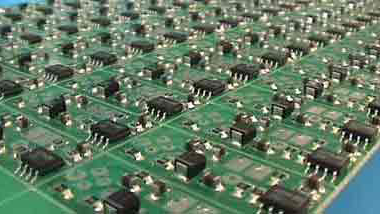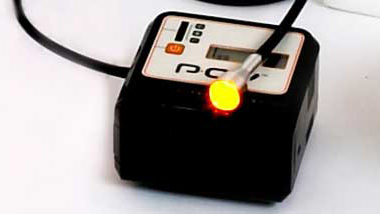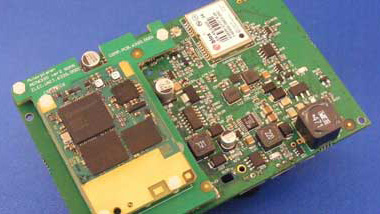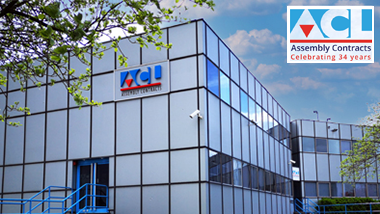26/02/2020
We have detected some delivery / supply issues for materials coming from China.
It is very difficult to get a clear picture as to what the exact status is, but two things are for sure - production time has been lost and materials are getting held up in the logistics chain.
This represents a double whammy going forward as even when production is running, delivery still may be delayed on top.
This is likely to have a knock on effect for many months to come.
Even if your products don't contain any Chinese manufactured components, it will still be a risk, as others seek material supplies elsewhere.
Therefore we would like to suggest that you consider placing orders for manufacture ASAP, and also consider building additional products for a larger buffer stock than you may have currently.
Hope you have found this helpful.
Please contact us if you have any further questions.
Conversations with Suppliers
International Distributor 7.6.18
GEN IC
Infineon – Lead time increased to 40 weeks ( IxWxx, FxWxx), mosfets lead time is also increased up to 40 weeks for SOT-23, C7, P7 and CFD series.
Nexperia - huge delivery issues, lead times increased to 40 weeks for their mosfet and Diode products. Lead time is also increased and can range from 20-40 weeks, especially for packages SOT89, SOT 223, SOT 323SD/DD, DSN.
Diodes - Their lead time on their mosfet products is also increased up to 42 weeks, this is due to a few major manufacturers like On-Semi, Nexperia and Vishay delinquent their customer scheduled. Affected series BSSxx and 27N002.
Vishay - a lot of their products are in serious lead time, starts with Zener diodes, mosfets, TVS diodes, rectifiers, resistors with the lead time ranging from 20-40 weeks.
MLCC
Murata will stop producing large size caps soon. For example, GR series case sizes 0402,0603,0805,1206 with dielectric of B1/B3(b)—JIS standard, X5R, X7R, X6S, X7R on those capacitance <= 1UF(105) and <=100V and cap size 0603,0805,1206,1210,1812,2220 with dielectric of B, X5R, X7R, X6S, X7S with capacitance <=0.1uf and voltage <100v.
AVX have stop receiving orders for some their parts including their automotive grade, high cap <=1 uf (105) and they have increased their price since last May. There is also a shortage on tantalum caps, particularly on case A.
Yageo - Prices are really high compared to the other manufacturers like Murata and Samsung. They have increased their prices from the start of June and they implement bidding process to their customer and see who can pay highest price.
Kemet - they will stop producing the general MLCC and will be focusing on automotive grade.
Samsung – Lead time increased up to 30 weeks and price increased in April 18.
CPU
Market has increased dramatically for Skylake servers.
We are still seeing shortages on the Krabylake notebooks.
Broadwell, particularly the V4 are also experiencing shortages.
MEMORY
NOR FLASH : Micron is delivering some EOL (Last time buy) for prefix PC, JS, N25Q.
FLASH : SLC NAND from Cypress is on severe allocation.
Large UK Distributor
Notes:
Chinese Companies are setting up new Companies here in Europe. This is in an effort to secure stock intended for the European market and then ship to the Asian mkt/resellers.
International Distributor
Notes:
Vishay Micro Melfs are now hitting 60wks plus. They are actually recommending redesigns as an alternative.
European Distributor
Notes:
Due to capacity issues Yageo ceramic chips and resistors are starting to see significant price increases.
European Distributor
Notes:
Vishay are struggling on all fronts to meet production demand.
European Distributor
Notes:
Vishay, Onsemi, Nexperia, TDK, Yageo, all on allocation.
Emails from Suppliers
10th April 2018.
European Broker
Good morning,
I thought you may like a little update on the current IC market.
By the end of Q1 in year 2018, IC market is still crazy with a lot of unexpected things happening.
The rising trend towards IoT, automation in various industries, automotive and portable devices are the key factor to drive the market. With a few new business models like 5G technology, mass data collection (ex. Block chain) will have significant impact on the electronic supply chain. The current saga is still expected to be last till end of 2018.
Here are few highlights from IC sector:
- Vishay’s fab constraints are not improving. Their lead time is still up to 52 weeks. As the world biggest discreet manufacturer, it is no surprise we are seeing huge shortage on series like SI4xx, SI7xx, SIPxxx, IHLPxx, SMCJxx.
- Same thing happening with On-Semi & Fairchild, the lead time is not showing any improvement. We are still seeing shortage on series like 2N7002, 1SMBxx, BCP56, FDGxx, LM3xx, MCxx, MMxx, Muxx, NCxx, 74LCxx, FDmcxx, FDSxx.
- Nexperia discreet pricing and lead time is also keep increasing. This is due to the strong demand from the automotive sector. Series PMEGxxx is on high shortages and some of the manufacturer part numbers are on allocation. BASxx, BAVxx, BZxxx, PESDxx.
- Diodes Inc shortage since the beginning of 2017 will last through 2018, mainly driven by strong demand from IoT and automotive sectors.
- STMicro lead time will remain at 24-28 weeks, we are expecting longer lead times for series like STM8 & STM32.
- We also see shortages on Infineon parts, this is due to the acquisitions between Infineon and IR. Series IR38xx, IRFxx.
- Infineon IGBT is on high allocation and no new lead time orders accepted. Price in the market has been increased tremendously. Most affected series: IKWxx , IHWxx.
- Chip resistor demand is growing especially from Taiwanese brand such as WALSIN & YAGEO.
- MLCC shortages is still in major. Price keeps going up and it is no longer surprising of having the lead time up to 50 weeks plus. Murata has been short since last year. Yageo will be the next one to follow Murata and we have been receiving lots of shortages on Yageo in March itself. There are a lot not accepting any more lead time orders now as Yageo is going to increase the price starting 1st April. Samsung has revised their price since 1st March this year. We will be expecting more shortages coming from other manufacturers such as WALSIN, AVX, NIC and TAIYO YUDEN.
5th April 2018.
Electronics Distributor
Hi Chris,
- General Summary - Expected to continue to tighten for the foreseeable future
- Attached info from Yageo.
- Also, similar from Murata.
- Thyristors. ST and WEEN (formerly NXP) are on allocation for Thyristors – partially they are not accepting new orders]. We have an extensive cross-reference available so if you are using thyristors please send me the part numbers.
Best Regards,
4th April 2018
Large UK Franchised distributor
The component market is causing a lot of issues right now. Any sort of surface mount cap that involves Murata, TDK, Kemet, etc. are facing lead times of 30+ weeks due to materials shortages. The Flash market for product lines like Micron are in the same boat. Over the next few months Texas Instruments is also expected to raise prices on a portion of their product lines as well.
Those are the major things to report. We have been helping people out as much as we can with the inventory we have to honour costs and help them secure inventory for next year's production but stock is flying off the shelf at a record pace right now.
21st March 2018.
European broker
I hope this finds you well. We are witnessing extensive Lead Times and Constraints/Disruptions throughout the global supply chain across various commodities as well as manufacturers.
In particular, the Passives are posing a serious issue such as: AVX; MURATA; WALSIN; VISHAY etc…I have enclosed a piece for your review that I believe you may find interesting and hopefully informative and of value.
Capacitor buyers hoping for relief from sky-high pricing this year are in for a disappointment, with leading supplier Murata cautioning that the current shortfall for multilayer ceramic capacitors (MLCCs) will persist at least until early 2019. Production of MLCCs, the most commonly used type of capacitor, will continue to fall short of demand into next year, Murata informed during a strategic planning meeting held in late January. Murata's comments align with MLCC outlook, which foresees no recovery from shortages and price hikes this year.
The shortfall is partly driven by soaring demand from the smartphone and automotive segments together with a plethora of new IOT products – all full of MLCCs. The combination of rising shipments and greater usage per product is driving historic MLCC growth in demand and shipments.
To put this level of demand in perspective, consider that each high-end smartphone manufactured in 2017 used an average of 1,000 MLCCs, double the number in 2011. Then consider that about 1.5 billion smartphones of all types were shipped last year, driving demand for up to 1.5 trillion MLCCs.
In the automotive segment, demand for MLCCs is expected to double from 2015 to 2021. Rising sales of electric vehicles and an accelerated shift from mechanical to electronic controls is increasing the number of MLCCs used in each vehicle manufactured.
On the supply side, the MLCC shortfall is being exacerbated by suppliers' shift in focus toward cutting-edge, small-case-size parts and away from older, large-case-size devices. This means that even though suppliers like Murata are expanding production to meet rising demand, they are increasing manufacturing only for more advanced, smaller case-size devices. As a result, buyers sourcing legacy MLCCs are likely to experience an even more prolonged period of shortfall and price inflation, with abnormal market conditions for these parts forecasted to prevail for the next 3-4 years, according to various MLCC suppliers.
Key Takeaway
With no relief on the horizon, buyers should continue to plan for continued widespread supply constraints and high pricing for MLCCs throughout 2018 and into 2019.
16th March 2018.
European broker
- Passive components are likely to be one of the biggest problems in 2018 and 2019. Depending where you take you updates from this could go on 5 years. As unrealistic as that might be there is certainly no end in sight.
- Fixed resistor lead time is still getting longer with some brands like ROHM not being able to commit to their delivery schedule. Yageo have now stopped taking new orders as they are trying to catch up with their current backlog. Vishay & Panasonic lead times are still at 40+ weeks.
- On the Chip Capacitor side, MLCC prices have increased anywhere from 20% to 500%.
- Well-known manufacturers like Murata, TDK, Taiyo Yuden, AVX and Kemet together with Taiwanese brands like Walsin, Yageo and NIC are still on shortage in the market.
- Low ESR caps from manufacturers such as Nichicon are starting to move their lead time out past 18 weeks.
Please also note that;
- Altera's latest round of LTB was brought forward and many have now missed the LTB. It's likely that Altera don't have enough material to complete the order for those that managed to get orders in on time. Please check and let me know if you have a shortage and I will do my best to help.
8th March 2018.
Large European Franchised distributor
The overall supply for Discrete’s is tight ongoing. Further price increases cannot be excluded. For SOT23 the situation is very strained. For IGBT there is an overall critical supply. Most lead times at Infineon, ST or ON Semi are beyond 38 weeks. We are partially on very constraint supply. NXP plans to massively raise prices for its RF portfolio first in April.
Analog Parts. In general, we are still facing long lead times. Commodity prices remain on an elevated level, DRAM: Micron DDR3 on allocation, other parts constrained.
NAND FLASH: Toshiba + Micron allocation.
SRAM: Stable pricing, good availability.
EEPROM: STM low density SO8N package LT increase to around 13 weeks partly still increasing at ST and ON Semiconductor.




















